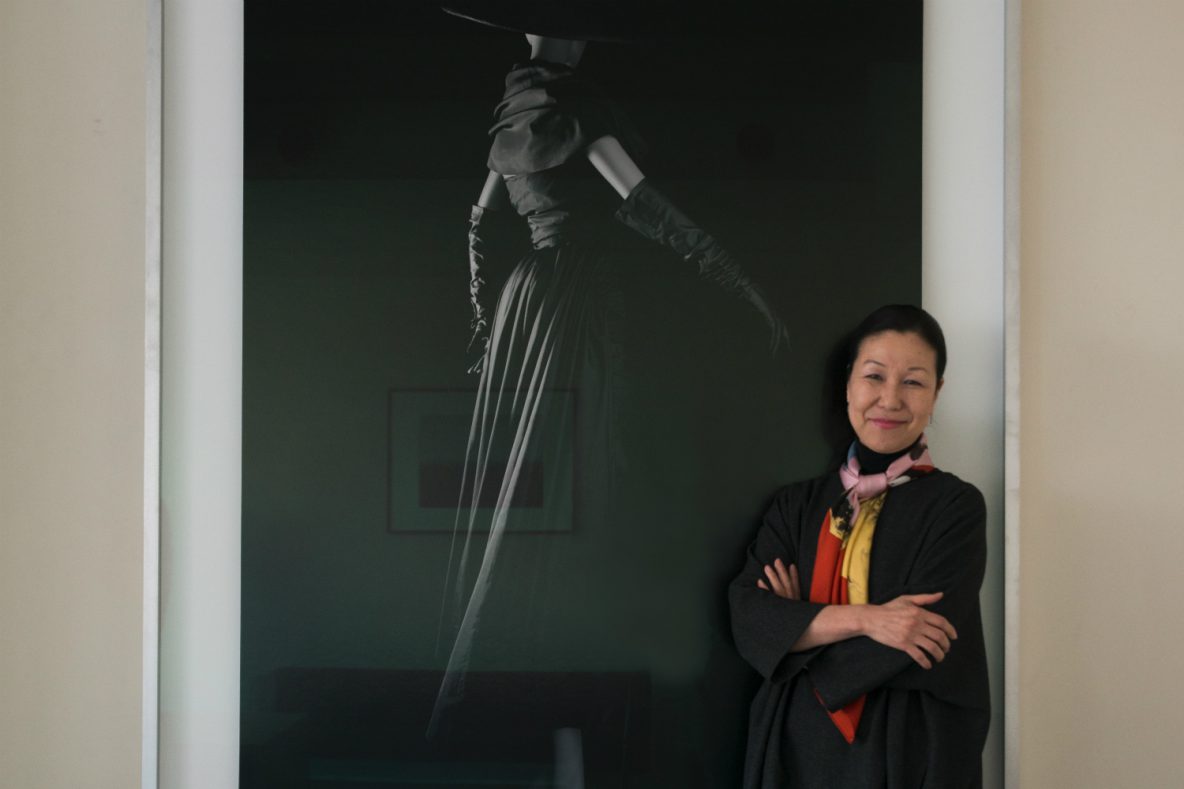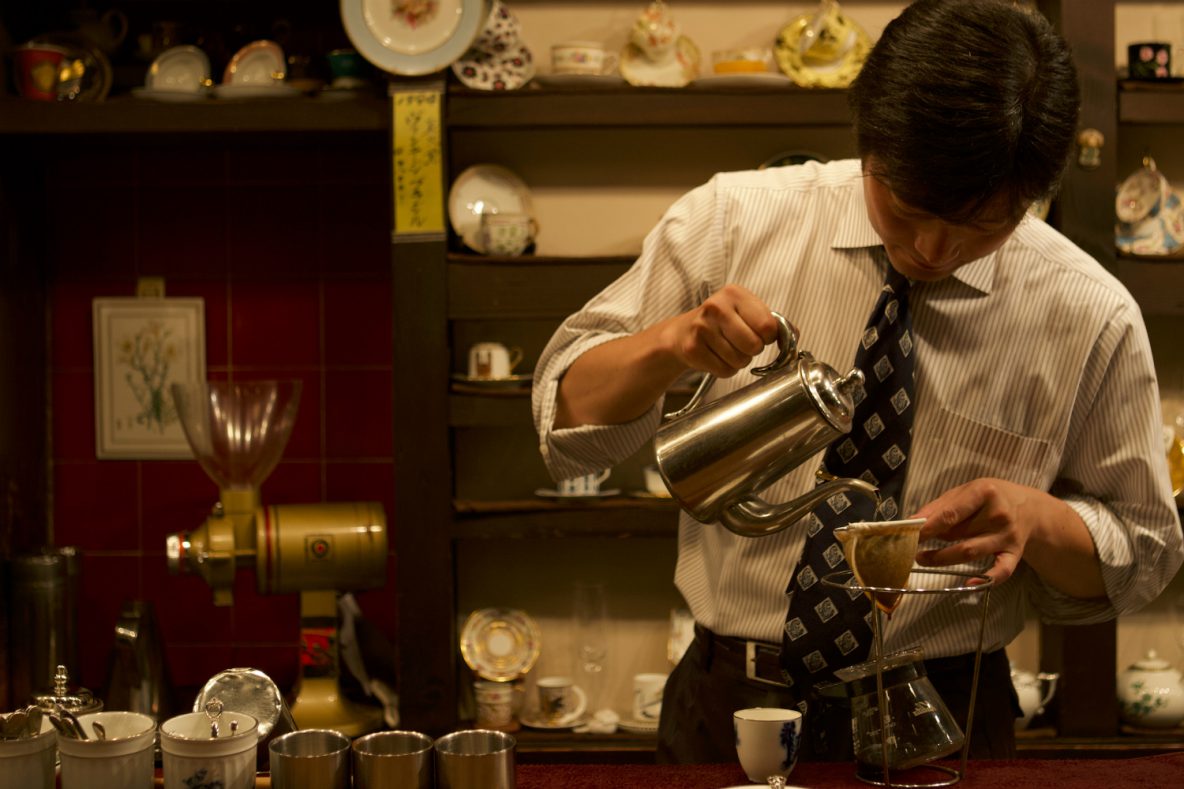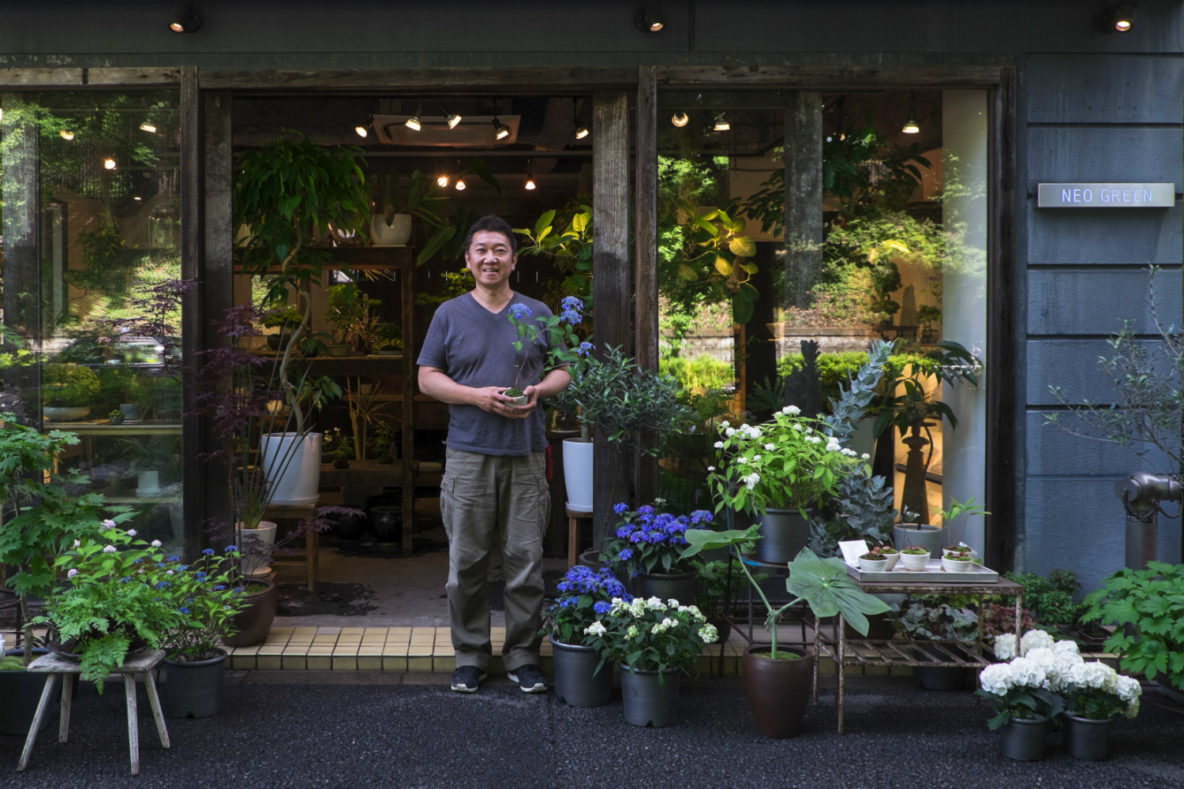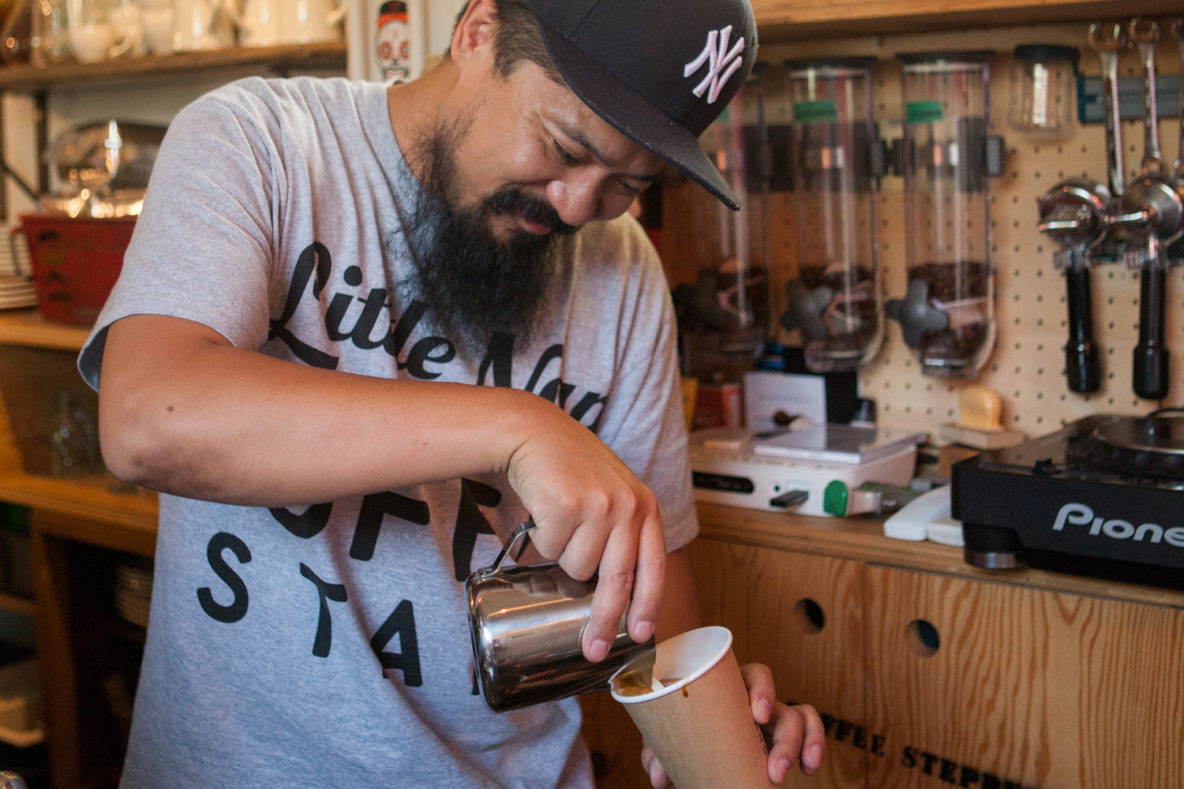Ask Atsuko Koyanagi what she likes most about being an art dealer and gallery owner and she doesn’t bat an eyelid: “The artists,” she says. “I don’t want to work for the market. I want to work for the artists and establish a close, lasting relationship with them. That has always been my passion and motivation.” Indeed it has. She now counts over 20 years of friendship and representation with the likes of Marlene Dumas and Olafur Eliasson – not to mention the photographer Hiroshi Sugimoto, who is also her partner in life. “I learned so much about the depth and spirit of art from them,” says Koyanagi, before recalling how she met Dumas at Art Basel in 1992. “Marlene had a daughter and had drawn many girls’ faces, but she became very interested in the faces of beautiful Japanese boys – girlish boys,” recalls Koyanagi. “She sent me 52 drawings of Asian faces in the late 1990s, and that was our first show together.” Koyanagi’s gallery occupies the eighth floor of an office building in Tokyo’s upscale Ginza district, once the heart of Tokyo’s art scene. Skyrocketing rents pushed many of her cohorts out, but she stayed because this was her family’s land. Her father was the fifth-generation owner of a ceramics shop, and she grew up in a house that stood here until it was razed during the property boom of the mid-1980s. Koyanagi’s first gallery, too, was a space for ceramics located on the ninth floor of the same office building. She moved down a floor when she switched to contemporary art in 1995 – an exhibition of photography by Sugimoto, at the time better known in the United States than in his native Japan, was her inaugural show. “The timing seemed right to find him an art gallery in Tokyo, but no one was interested,” she says with a laugh. “Japan is often behind the times. So I decided to do it myself.” Minimalist in design, with exposed concrete columns and beams, the gallery is deliberately functional. But the unassuming walls have hosted an astonishing roster of artists, not least among them Eliasson, whose work once filled the Turbine Hall of London’s Tate Modern. Scrolls made by Christian Marclay have hung here; the sound installations of Ryoji Ikeda have filled the air. Unsurprisingly, considering who her partner is, Koyanagi is especially interested in photographers: Hellen van Meene, Thomas Ruff, and her close friend Sophie Calle, to name just a few. Koyanagi and Calle travelled together around Japan while the latter was getting over the end of a relationship and the photographs Calle took on that journey contributed to one of her most celebrated works, Exquisite Pain. With 70 per cent of sales coming from abroad, Koyanagi has faced pressure to look for new markets overseas. But her heart says otherwise. “I’m happy to remain this size, with my existing team – loving the artists and loving their art,” she says. “Anything else would be a distraction.”
Chatei Hatou
In hypermodern Tokyo, it might seem there is little time or space for the quiet rituals of the Japanese tea ceremony; its ethos of ichigo ichie – or ‘one encounter, one moment’ – sounds like a quaint echo from the past. Thankfully, at Chatei Hatou, the spirit of ichigo ichie lives on, albeit updated for our contemporary world. Today, coffee is our common fuel, and a rich cup of Hatou slow-drip is that fuel at its best. The coffee shop is located near the heart of Shibuya, Tokyo’s most chaotic and cacophonous neighbourhood. A walk through its teeming streets can leave you feeling sensually assaulted and physically exhausted. For this, a coffee at Hatou is the perfect antidote – and pick-me-up. “Hustle and bustle is what this area is known for,” says barista-manager Kazuya Terashima. “We intentionally made this a calm place – a world within a world.” The sensory experience inside Hatou is the antithesis of its external surroundings: natural wood textures, soothing classical music, beautiful ikebana flower arrangements, and the deep, wafting aroma of coffee. Many regular customers prefer to come to Hatou not with friends, but alone. They sit at the counter and watch the barista at work. Each drink is made by hand with great care – the focus is on perfection, not speed. “It takes 10 minutes, often longer, to make one cup,” Terashima explains. “But people are willing to wait.” The ritual unfolds, step by step: he picks a worn metal container containing coffee beans that have been aged for up to three years. After passing them through a grinder, he measures out precisely 25 milligrams of fine coffee powder in a cloth filter. He heats water in a copper pot, keeping the temperature a consistent 87 degrees centigrade. Then, with unerring concentration and accuracy, he drizzles the water into the filter, saturating the dry coffee until it hits critical mass and begins to trickle into a small glass pot beneath. After that he patiently adds more water – one drop at a time – until the thick black brew is ready. “This method produces a coffee that is stronger than normal, but it also brings out the sweetness of the beans,” Terashima explains. “Many people have not experienced coffee like this before.” Once ready, the drink is transferred into one of hundreds of unique porcelain cups the shop has collected over its 24 years in business, ranging from Japanese Arita to British Wedgewood to German Meissen. Terashima says he makes a mental note of which cup each customer uses, so he can give them an alternative next time, explaining: “Even if they order the same thing, I like to think each Hatou experience should be a little bit different.”
Neo Green
Hitoshi Shirata’s plant and bonsai store Neo Green is neither large nor ostentatious. Yet it frequently stops passing pedestrians in their tracks. Along an unremarkable grey stretch of Tokyo tarmac, his carefully pruned and beautifully potted selection of nature’s own designs is powerfully incongruous. “People in this city need more green in their lives,” says Shirata. Only three per cent of Tokyo is given over to public parks and other green spaces, compared with 38 per cent of London. The decision to open Neo Green in 2007 came when Shirata was forced to stop and reflect on his direction in life. He was a fashion entrepreneur whose businesses were turning over hundreds of millions of yen each year. He had reached a position that most would call success. But Shirata was less certain about what he had really achieved. Life, he felt, was slipping out of his control. “The little company I had started in 1993 with my father’s help had become too big,” he says. “When my father died, I had this yearning to do something new.” Not for the first time, family tragedy had impressed on Shirata the importance of regeneration. He remembered the moment when, as a 12-year-old boy, his grandfather passed away, leaving him the responsibility of caring for his beloved rooftop garden. “I think that was the first time I fell in love with plants,” he says. “Cut flowers are wonderful, but they are normally bought for an occasion and then thrown away. Plants live on.” Shirata is a skilled, self-taught bonsai artist whose lack of formal training allows him to take a fresh view on this tradition-bound art. On the shelves of Neo Green, a 30-year-old miniature zelkova sits alongside palm-sized pines fashioned to look like Christmas trees. Traditionalists would balk at this, but to Shirata such innovations are the bridges that can connect bonsai with younger generations. Ever the tech-savvy entrepreneur, Shirata maintains a database of every customer and what they have purchased. If a plant, separated from his masterful touch, starts to show signs of fading, he can instantly pull up exactly what was purchased and when, in order to give the customer the best possible care instructions. More recently, people have started taking smartphone pictures of their plants and sending them to the shop for a visual check-up. Shirata doesn’t mind – working hand-in-hand with his customers to care for their plants is crucial to his mission. “If we care for them, they give back to us,” he says. “It’s all about partnership – between myself and my customers, and between human beings and plants.”
Little Nap Coffee Stand
“Wherever you go in the world, there are always coffee shops near parks. Parks and coffee shops – they compliment each other. They’re places where people congregate,” observes Daisuke Hamada. “But that wasn’t so true of Tokyo, which is why I chose this place.” Hamada is referring to Little Nap Coffee Stand, his diminutive shop beside Yoyogi Park. One of the largest open spaces in Tokyo, the park is the city’s unofficial playground, used for early morning jogs, dog walks and outdoor yoga. During cherry blossom season, the grass becomes a patchwork of parties celebrating the arrival of spring. In the evening, sounds fill the air – a violin here, a saxophone there – as musicians use it as a place to practice. Little Nap is housed in a slither of a building squeezed between an offshoot of the park and a railway line. Every time a train passes by, the shop rattles a little. It’s a sensation Hamada says he has learned to love because, “it’s just the rhythm of the city.” The location is more auspicious than it sounds. Across the tracks is one of Tokyo’s most boho suburbs, home to young families with money and taste, and with – one might guess – more dogs per square mile than anywhere else in the city. Little Nap is en route to the park. “The shop is supposed to be a place where you can drop by for a break in your day,” says Hamada. “It’s like a siesta – but with coffee.” Hamada’s love of the bean was planted by his father, but nurtured during a trip to Italy while working for a company that imported espresso machines. His first café was a disused shop in rural Toyama, his home prefecture northeast of Tokyo, and he decorated it simply with the help of some friends. Years later, and having long-since relocated to Tokyo, Hamada opened Little Nap. The distinctive logo, inspired by his love of vintage typography, is what most will notice first, and yet it’s the more no-nonsense type saying ‘Coffee Stand’ that he deems most important to its look and feel. “In America, you see signs on the side of the highway that just say ‘Restaurant’ or ‘Coffee’,” he says. “You don’t even know the name of the place, but that doesn’t matter. You’re just being told what it does, but the sign somehow has the ability to make you feel something.” With his scruffy beard and Salvador Dalí-esque moustache, Hamada is clearly at home in his self-made surroundings. Consciously fashionable, he has a nonchalant air that masks a keen mind for both the business and the science of coffee. “I customised my espresso machine,” he says proudly. “I changed the pumps, water lines, and temperature settings – it was like pimping up a car.” The changes, Hamada maintains, make the machine easier to use when he’s busy, and allow him to tweak the flavour of what he serves – finessing this begins when he arrives … Read More




